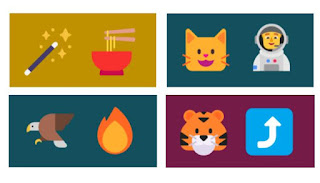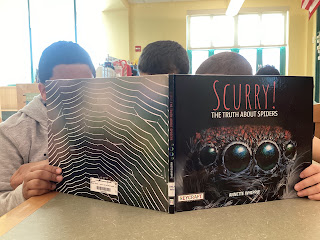Origami in our library

The crafter and engineer in me LOVES origami. That has rubbed off on my students. Students' love of origami grows and evolves in our library Why origami? It is active! Active nonfiction books guide students through DOING something. It has a different feel from most books that share facts. It supports literacy - both spatial and the traditional literacy. Origami encourages reading through the visual appeal of the pages - no heavy text is required to read to be successful. Captions or short directions do the trick. Short spurts make students feel successful! Leadership! Student leaders will emerge from the group and become "coaches" for the others. It is often the least likely candidate who will lead these groups. Paper knows no language barriers. Students can sit side by side and fold together despite the fact that they do not speak the same language. Folding is its own language! It is practically FREE! Students can borrow a book and grab a stack of paper to take home a...



